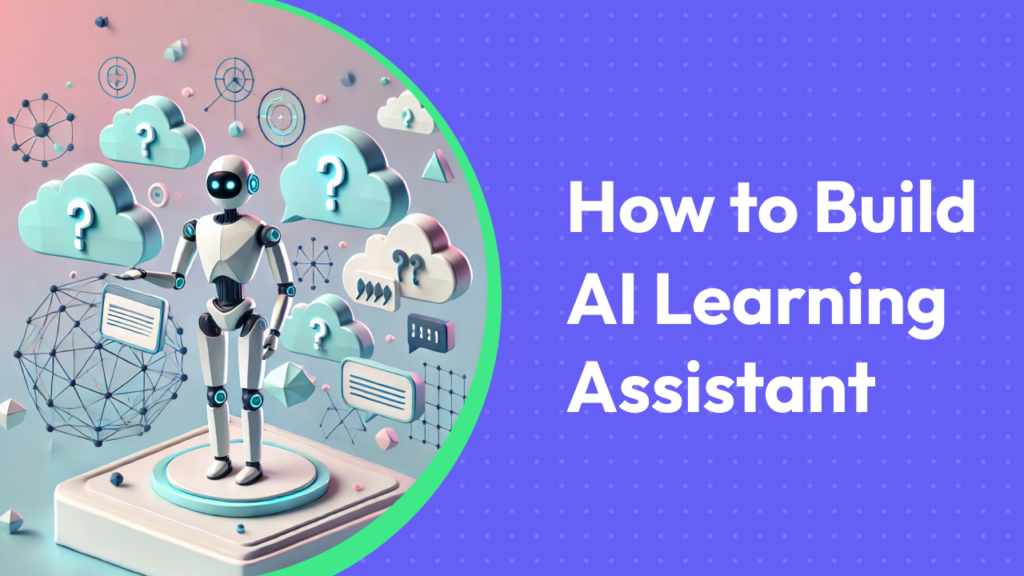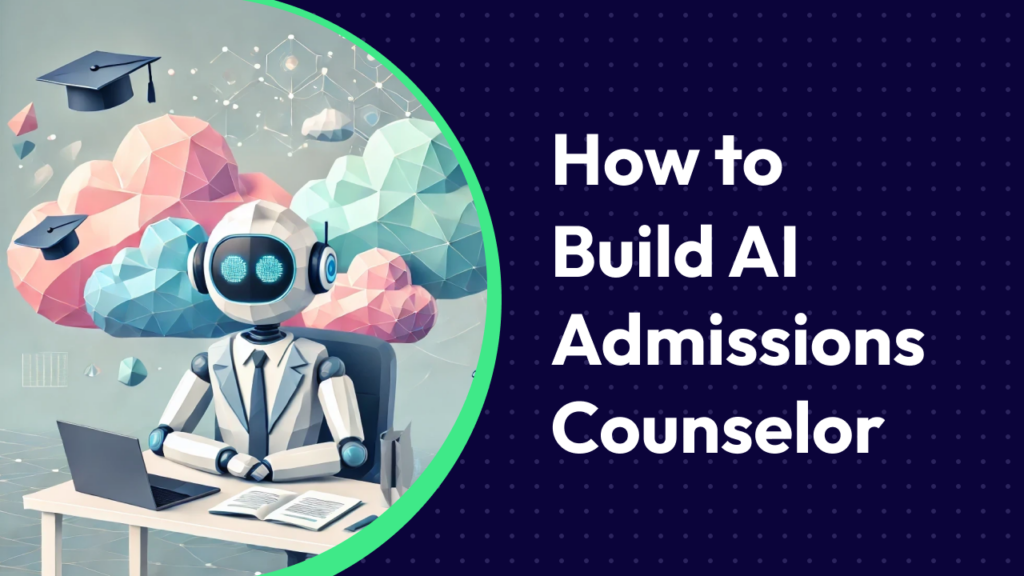- Role of AI in Education in 2025
- Who will benefit from using AI in education?
Friends, you should agree that our world is changing too fast. We do not always have enough time to get ready for life in the digital era using only classical learning methods. We need fresh ideas and new approaches to teaching and learning. We need more than just traditional lessons, lectures, and knowledge transfer. So today, we will talk about how AI can become our staunch ally in this endeavor.
The World Economic Forum has called artificial intelligence the “defining technology of the era of Education 4.0”. These are not just buzzwords. AI is opening up entirely new opportunities in the education sector. Want to find out exactly what they are?
In this article, we’ll take an in-depth look at:
- the role of AI in education for all educational process participants;
- how colleges, universities, language schools, various professional courses, and teachers can utilize AI in their activities;
- key trends and benefits of AI in education.
Of course, I will share real-life examples of how AI can be used in education. These examples will clearly demonstrate how AI solutions are transforming and improving the education industry.
Let’s dive into the world of AI opportunities that are available today.
We are starting now!
Role of AI in Education in 2025
Technology is actively transforming education systems around the world, and the practical implementation of AI is becoming a catalyst for innovative learning models. It helps solve a variety of tasks, from automating administrative processes to creating an accessible learning environment for all students. According to Forbes Advisor, 60% of educators use such AI tools in their classrooms:

Analysts at HolonIQ, in their new “2025 Global Education Outlook”, call AI the top trend in education. This suggests that its importance and scope will only continue to grow!
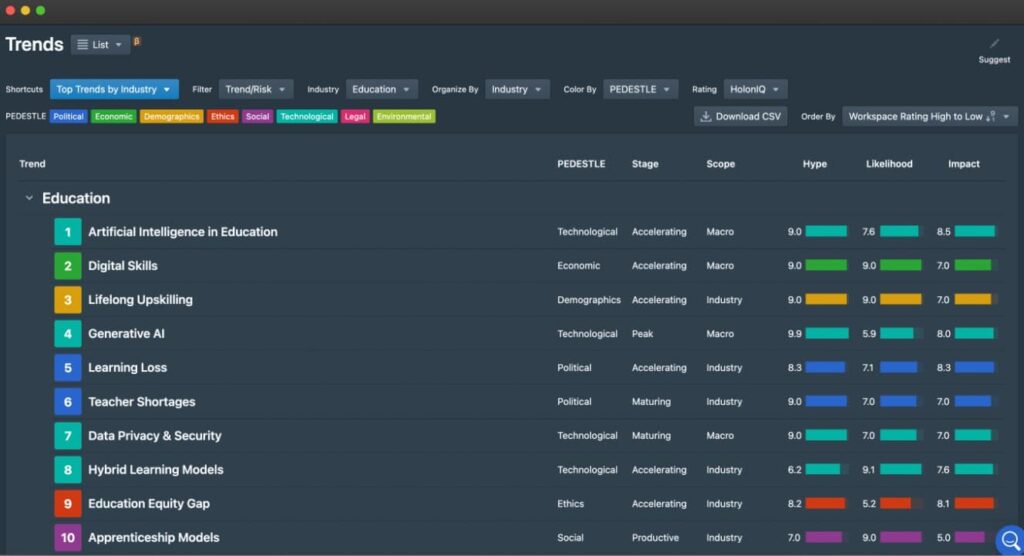
Now let’s take a look at how AI can be used in education. I’ll cover a few key trends that will help you understand how to maximize the power of generative AI in education for teaching and learning management.
Trend 1. Personalized learning experiences for students
While traditional methods and curricula often fit students into an “average” study plan, AI can be used to create personalized learning plans or assignments that are tailored to the strengths, weaknesses, and needs of an individual student. Anything that can bring out their potential is taken into account! AI-powered platforms can analyze performance, identify knowledge gaps, and tailor learning materials to the pace and learning style of pupils and students.
Trend 2. Automating repetitive tasks for educators to improve efficiency
I am confident that educators will appreciate the benefits of AI in education. Routine, tedious tasks that require too much time and effort will be a thing of the past. Checking homework, writing reports, preparing questions for tests and other tasks can be “outsourced” to AI. This is great news!
Trend 3. Using AI to enhance accessibility for diverse student needs
This is perhaps one of the most important trends that will make education more accessible to a huge number of people, regardless of where they live, social status, or health status. AI is breaking down barriers for students with different needs and opening the door to knowledge for everyone.
Trend 4. Leveraging data insights to optimize learning outcomes
AI is a tough analyst. It processes massive amounts of data on student performance, attendance, and other student metrics. This allows for identifying patterns and trends and understanding what works and what should be improved in curricula, teaching methods, or the organization of the learning process.
The role of AI will grow not only in education but also in other areas — manufacturing, retail, the energy sector, and healthcare. Let’s take a look at who will profit most from the introduction of AI in education and how these changes will affect specific participants in the educational process.
Who will benefit from using AI in education?
Each and every of its participants! Students, teaching staff, and educational institutions find solid pros of AI in education. Let’s see how it works in practice.
How Universities and Colleges Can Use AI
We suggest looking at how universities and colleges are using the benefits of AI in education today.
- Streamlining administrative processes. Important benefits of using AI in education are that AI can automate routine tasks, such as processing applicants’ applications, filling out documentation, scheduling and admitting students, assigning grades, and developing courses according to the number of participants and their interests. Automating administrative processes allows institutions to use resources more efficiently.
Tracking attendance and grades, and answering AI chatbots about schedules, exams or scholarships gives teachers extra time in the day. AI-powered tools allow them to focus on mentoring or working individually with students. High schools can also use tools to automate scheduling meetings with applicants and students. According to Calendly, administrative scheduling with faculty and staff saves 87.5 percent in cost savings.

Researchers at the Georgia Institute of Technology developed The Jill Watson virtual teaching assistant, which answers common questions from students in an Introduction to Biology course. They also created the VERA platform here. The web application helps students create conceptual models of ecological systems.
Staffordshire University has developed a “Beacon” chatbot for students. In it, you can keep track of your timetable, search for staff in the directory, view contact details of lecturers, request documents, search for societies, clubs, and routes to campus buildings:
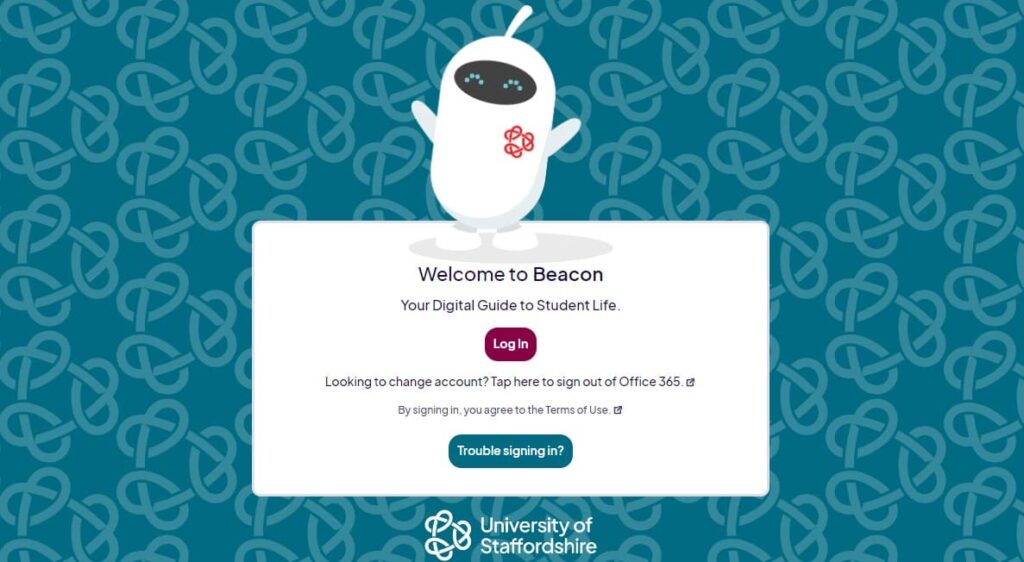
- Accessibility and Inclusivity. The benefits of AI in education are that AI solutions break down language barriers and help create an inclusive learning environment for students with disabilities and visual or hearing impairments. AI-enabled screen readers, programs that recognize speech or convert text to speech, and audio-to-text or real-time translation systems [FlexClip, Nuance Dragon, Murf AI Translate, and other AI tools] can be indispensable aids.
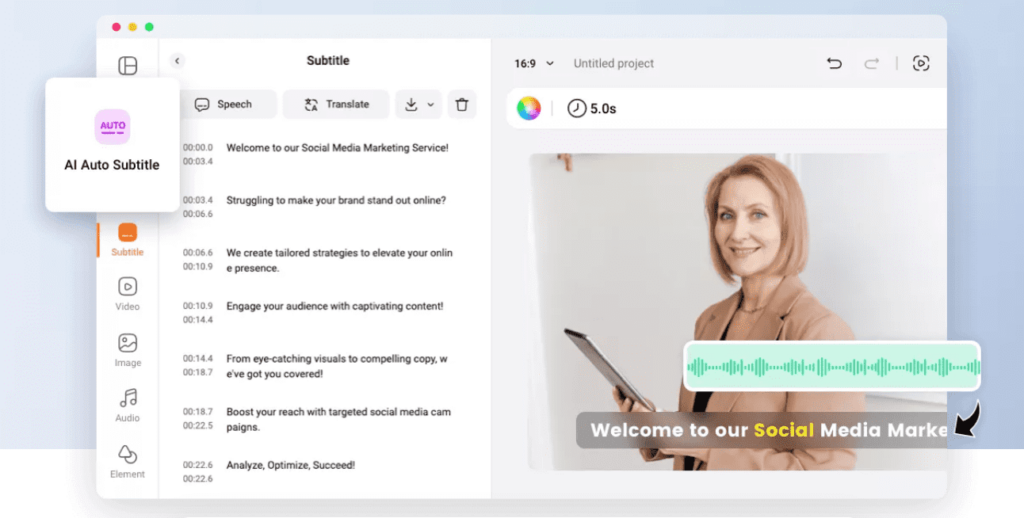
- Enhancing student retention through personalized engagement. Another important point is improving student retention. AI in higher education can analyze academic performance and track attendance and other data. Based on this information, it predicts students dropout or identifies those with temporary learning difficulties. Then you can instruct them and offer the most suitable courses or develop individualized programs to engage, support, and motivate. These benefits of AI in education help to increase student retention.
Western Governors University in the American state of Utah uses predictive modeling for student retention. During 2018–2020, it helped develop early intervention programs for at-risk students:

This has yielded great results! The university increased the number of undergraduates in the bachelor’s program by 5 percentage points.
Now let’s move from higher education institutions to language schools and professional courses. AI tools need to be integrated into their work routine to attract leads and new learners, automate administrative tasks and the learning process. I will show with the example of Omnimind.ai how AI solutions can be quickly and easily integrated into your work routine.
Opportunities of AI for Language Schools and Professional Courses
We’ve already looked at the potential of AI for higher education. Now let’s focus on language schools and professional courses. Here are some examples of how AI can simplify workflow for staff and make learning more efficient and convenient for learners.
- Improving learning outcomes with adaptive content. Learning foreign languages is a complex process, but AI is making it easier, more efficient, and more fun with immersive tools. This can include real-time help with correct pronunciation, virtual conversation partners or chatbots to practice speaking, adaptive content to the level and pace of a particular student, and interactive games to memorize words and phrases:

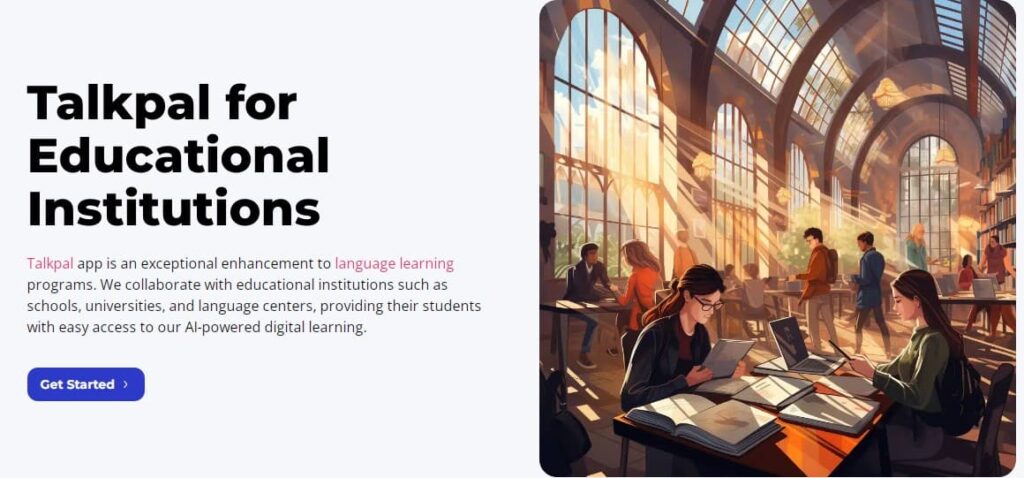
AI tools, like Diffit, can also create programs tailored to students’ goals, interests, and preferences.

- Providing multilingual support. AI can provide multilingual support. This breaks down language barriers, makes learning more accessible to people from all over the world, and allows them to study at their convenience. Isn’t that a dream?
- Delivering targeted skill training through AI tutors. 24/7 learning virtual assistants can answer questions, address gaps in knowledge, and create realistic simulations of work situations. This allows students to practice and hone new skills in a safe and controlled environment.By creating training programs for staff on AcademyOcean, dialogs can be simulated. This allows employees to apply theoretical knowledge in difficult situations:
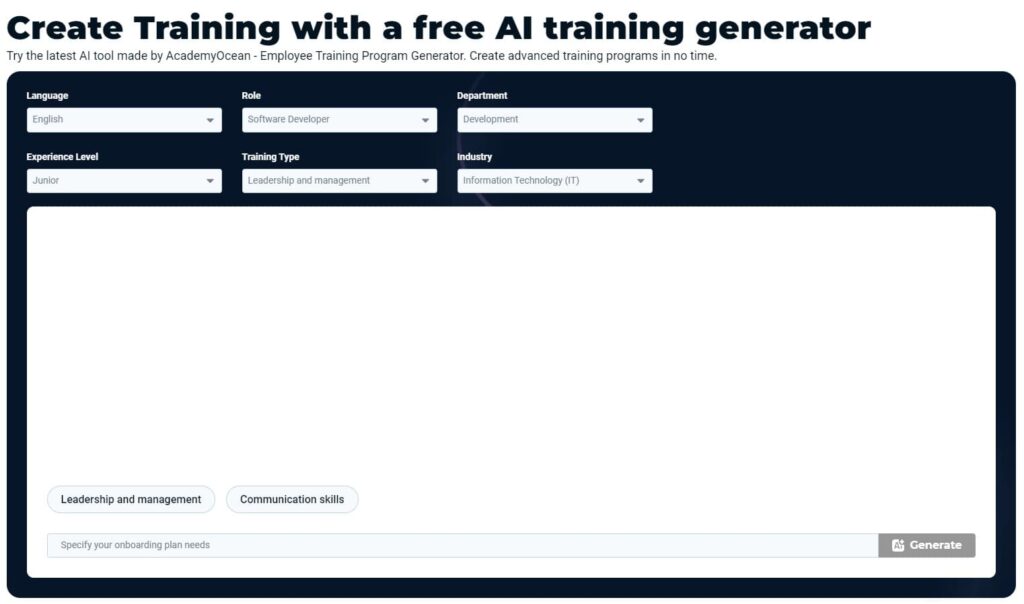
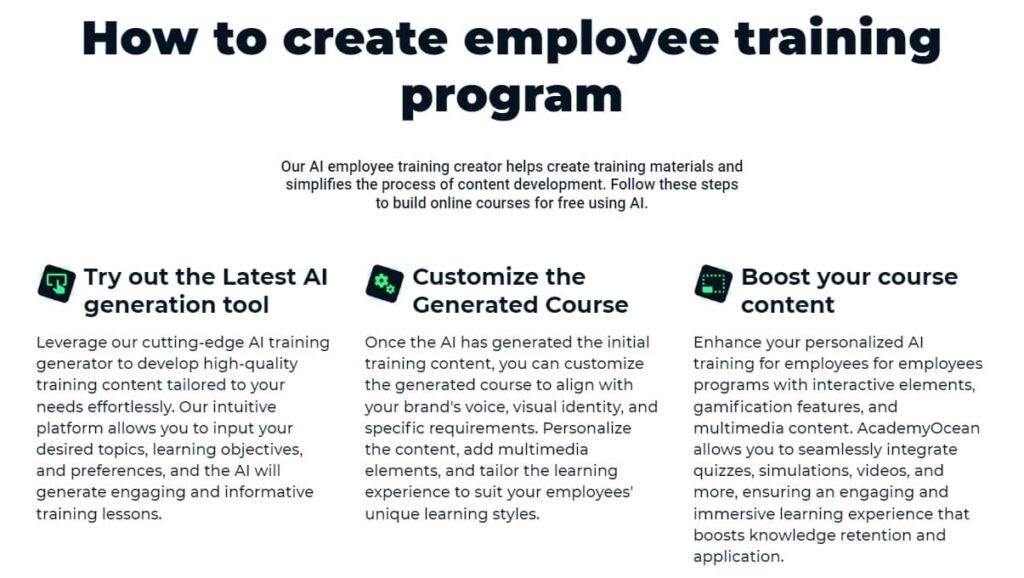
But that’s not all! AI can be a real assistant for students too, reminding them of homework deadlines, tracking their progress in language learning, and offering useful personalized learning materials. Cognii Virtual Learning Assistant engages students in personalised tutoring conversations and provides instant feedback.
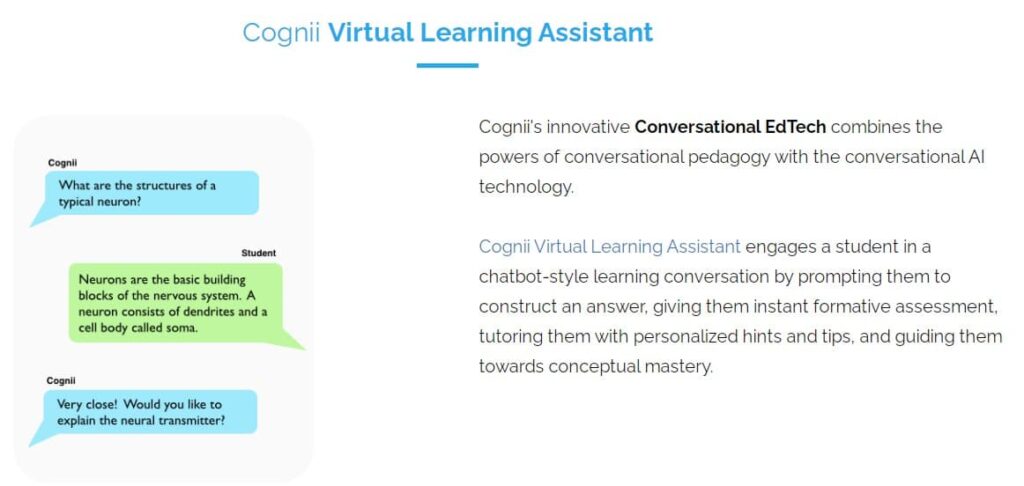
A virtual assistant from Omnimind.ai provides course updates, resource suggestions, and automated progress tracking. This makes learning more structured and efficient and keeps students engaged.
- Offering continuous support and assessment to adult learners. AI customer support agents or AI chatbots provide instant feedback, answer frequently asked questions, automate notifications, collect statistics, check tests and homework, help students with schedules, search for necessary literature or additional materials, solve organizational issues. Convenient, isn’t it?
Now let’s talk about how AI can help individual teachers in their daily work.
AI solutions for Individual Teachers and Professors
AI is a great assistant for teachers and professors in their daily routine.
- Automating repetitive grading. AI reduces the workload and frees up valuable time for communicating with students and preparing for classes. Eliminating the human factor in grading papers and homework checks minimizes the risk of error and makes grading objective and unbiased.
- Homework Checker. Checking homework is a separate kind of headache. AI tools can take over the chore! They can quickly check papers, including essays and tests, based on set criteria. This is one of the most tangible benefits of AI in education, which frees up time for more important tasks — creative work and preparing for classes with students. You can use Turnitin’s Gradescope platform to check tests or submit assignments:
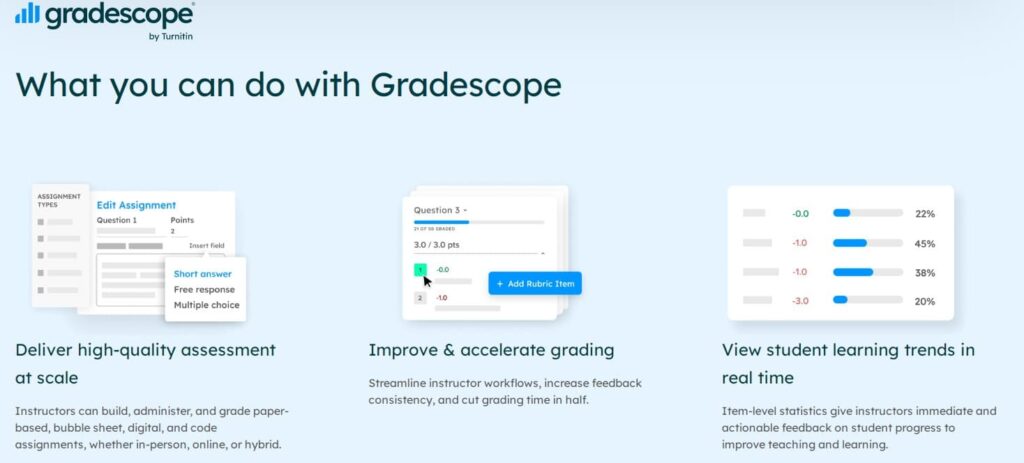
- Generating custom teaching materials. AI solutions make learning more engaging. Teachers can use them to prepare test questions and create tests, exercises, quizzes, presentations, infographics, audio and visual content, and interactive materials customized to specific topics and student and learner backgrounds. Adapting ready-made materials to the needs and interests of specific students makes learning more effective and engaging for them. Quillionz is ideal for generating questions for tests and quizzes. However, for now, the platform only supports the English language.
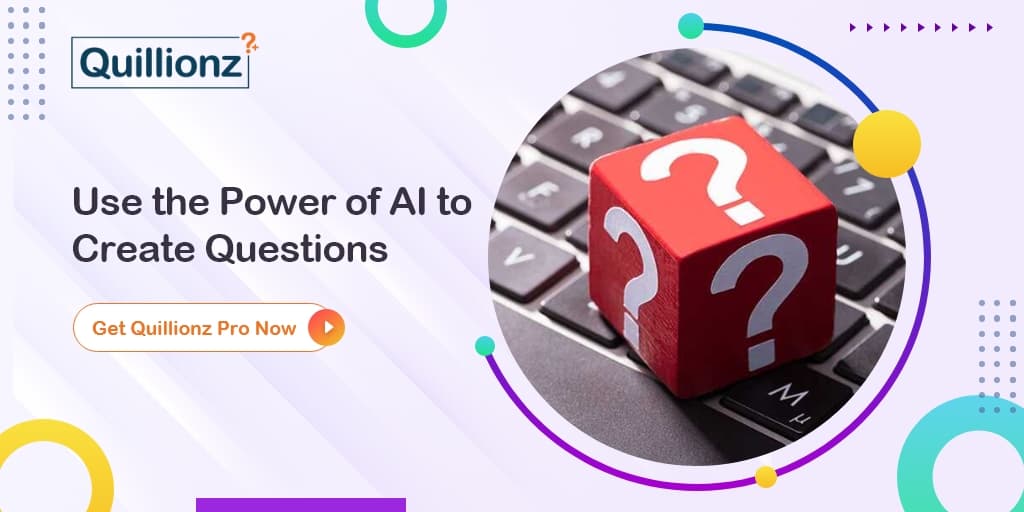
- Program Creation. AI can become an indispensable assistant when developing curricula and syllabi, compiling reading lists for specific topics, and structuring courses according to learning objectives. A personal methodologist who is always at hand! For example, the Thinkster Math platform tests students and then develops a personalized math learning plan. Khan Academy’s Khanmigo generates lesson ideas, creates lesson plans, and monitors student progress:

Learning should be fun at any age! AI tools, gamification, and interactive materials make learning more entertaining, engaging, and motivating, and provide instant feedback. Achievement rewards are a great incentive for learning!
So, we have seen the huge potential that AI holds for the education system. As you can see, this is not a futuristic concept, but a powerful tool that is already being successfully applied in higher education today.
Using the capabilities of AI makes it easier for teachers to create learning materials and prepare for classes and allows them to focus on live communication and discussions, hands-on projects, and mentoring support to develop students’ potential, and students themselves to achieve better results.
Next, let me walk you through two powerful use cases you can implement with Omnimind.ai
Use Case#1. AI Learning Assistant to Make Teaching Easier and Help Students Learn Better
The Problem. Teachers Are Overwhelmed by Repetitive Questions
Teachers know the struggle—students keep asking the same questions over and over, and it’s time-consuming!
Instead of focusing on teaching and mentoring, educators often find themselves answering repetitive queries after every class. This not only drains energy but can lead to frustration for both students and staff. And let’s be honest, it’s not the best use of a teacher’s valuable time.
What if there was a better way to handle this? What if there was a way for teachers to get back their time and help students get the support they need without the constant interruptions?
The Solution. Build Your Own AI Learning Assistant with Omnimind.ai
That’s where Omnimind.ai comes in! With Omnimind, you can create your own AI Learning Assistant—designed specifically for your course. It’s not just another chatbot that gives robotic answers. This is a smart, personalized assistant that can actually help students with their questions, understand the course material, and make learning more engaging.
Omnimind.ai lets you create a bot that’s tailored to your own lessons, meaning students can get quick answers, while teachers focus on what really matters—teaching.
How to Set Up Your AI Learning Assistant with Omnimind in 3 Simple Steps
- Upload Your Course Materials
The first thing you’ll do is upload all your teaching materials. This could be anything from video lectures to presentations, reading materials, study guides—anything that can help the assistant answer student questions accurately. The more info the AI has, the better it can help students!
- Customize Your Assistant’s Behavior and Personality
Now it’s time to make your assistant feel like a real person! You can set the tone for the AI’s responses—whether you want it to sound friendly, professional, or even a little casual. You can also choose how the bot should respond to different kinds of questions and give it a name and avatar that students can relate to. It’s your bot, so make it fit your style!
- Add Your Assistant to Slack or WhatsApp
Once your AI assistant is ready, it’s time to make it accessible to your students. With Omnimind, you can easily integrate the bot into popular platforms like Slack or WhatsApp. Students can message the bot directly on these platforms, making it super easy for them to get help anytime, anywhere.
For a detailed guide on setting up your own AI Learning Assistant, check out our step-by-step tutorial here.
Use Case #2. Build Your AI Admissions Counselor and Boost Enrollment by 30%
The Problem. Prospective Students Struggling to Get Answers
For prospective students, applying to college or university can feel like a maze—endless emails, phone calls, waiting for responses, and scrolling through social media hoping to find the right info. Students are looking for answers, but getting them can be a slow and frustrating process.
This is especially true for Gen Z, who expect quick, instant responses and don’t want to waste time chasing down information. Yet, many institutions still rely on traditional methods of communication, leaving both students and admissions teams overwhelmed.
But what if there was a smarter, more efficient way to handle all those questions? What if prospective students could get answers 24/7 without waiting for office hours or responding to a dozen emails?
The Solution. Build an AI Admissions Counselor with Omnimind.ai
With Omnimind.ai, you can build a smart, AI-powered admissions counselor that’s always ready to assist prospective students. This isn’t just any chatbot—it’s a powerful assistant that can answer questions, provide detailed information, and walk students through the entire admissions journey, 24/7.
By setting up your own AI admissions counselor, you’ll not only streamline your admissions process but also deliver faster responses and more personalized guidance for your applicants. The best part? Your admissions team will have more time to focus on the higher-value tasks that really need their expertise. Schools using AI for student engagement have seen enrollment increases of up to 30%, thanks to a smoother, more efficient experience for students.
How to Set Up Your AI Admissions Counselor in 3 Easy Steps
- Upload Your Admissions Materials and FAQs
Start by uploading all your relevant admissions materials, including:
- program details,
- application requirements,
- deadlines,
- and any other information students commonly request.
The more data the AI has, the better it can answer student questions accurately and quickly
- Customize the AI’s Behavior and Personality
Make sure your AI counselor feels approachable and professional. Set the tone for the assistant’s responses so it aligns with your school’s culture and values. You can even make the bot’s appearance more human-like with an avatar, helping students feel like they’re chatting with a real person rather than a machine
- Add the AI Counselor on Website
The virtual assistant will be available on the website of your educational institution. This intelligent AI live chat is designed to help abiturients navigate through everything you offer, all in real-time and 24/7
For a detailed guide on setting up your own Admissions Counselor with Omnimind.ai, check out our step-by-step tutorial here.
Why This Is a Game-Changer
- Save Teacher Time. By letting the AI take care of the repetitive questions, teachers can focus on the more important, creative aspects of their job—like lesson planning and student interaction
Instant Help for Students. No more waiting for office hours or emails! Students can get immediate, personalized help directly from the AI, improving their learning experience and satisfaction
AI in education — harness the power of technology
The benefits of AI in education are impressive and empowering for educational institutions and teaching staff. It may not be long before we see a fundamentally new approach to education that will change the way we think about learning and teaching forever.
Ready to unlock the potential of AI in education? Omnimind.ai will be your partner in building the best AI-powered chatbot for your university, college, language school, or professional courses. We will help you integrate AI into your educational or administrative processes easily and quickly. Let’s build the future of AI in education together today!

How useful was this post?
Click on a star to rate it!
Average rating 1 / 5. Vote count: 1
No votes so far! Be the first to rate this post.


